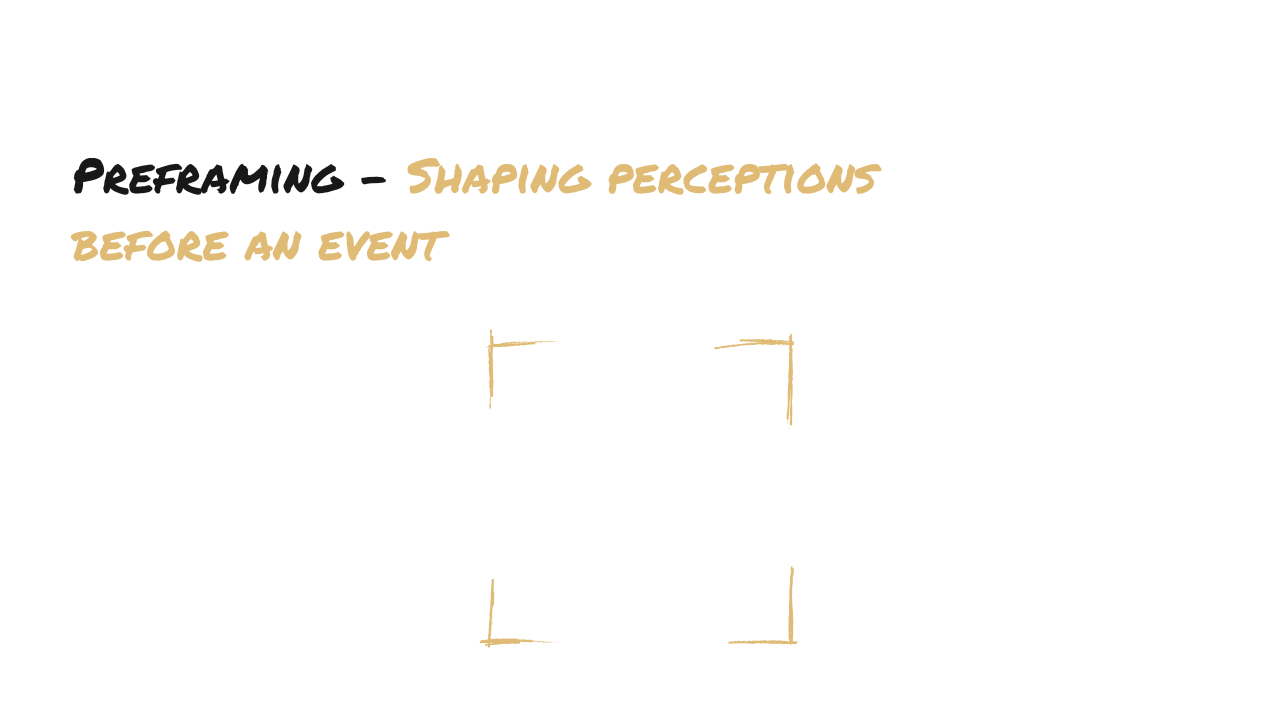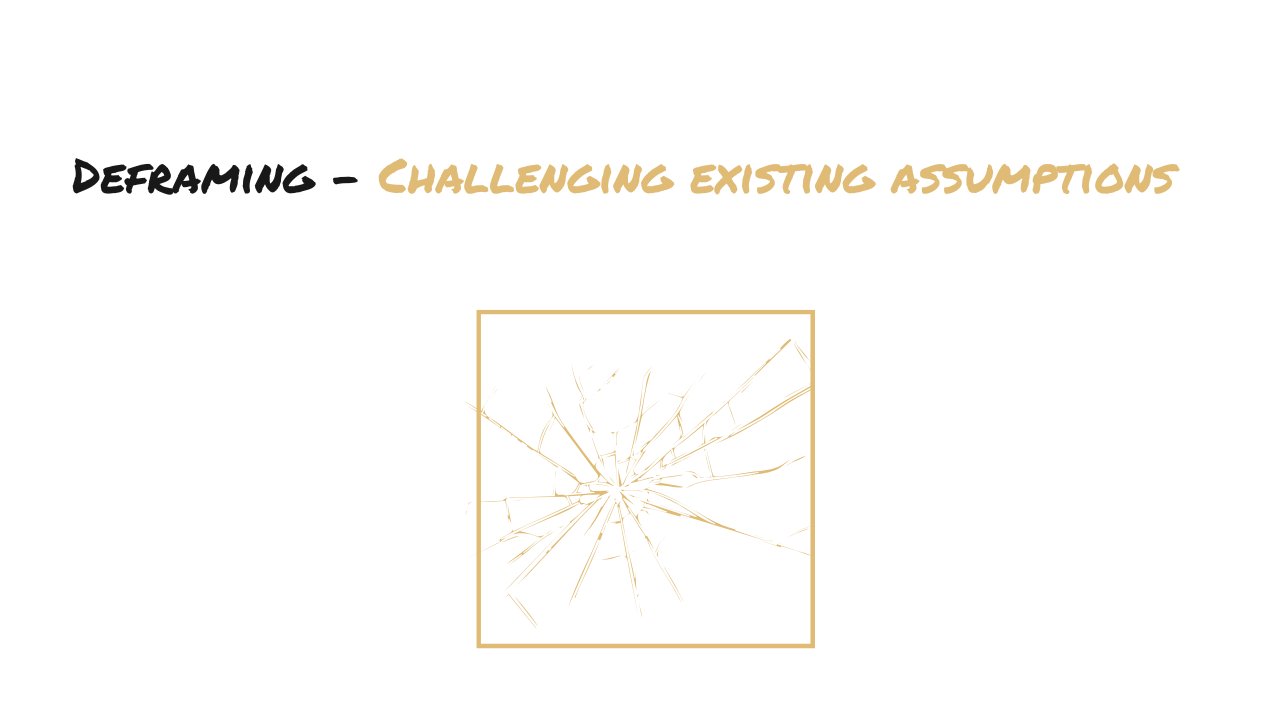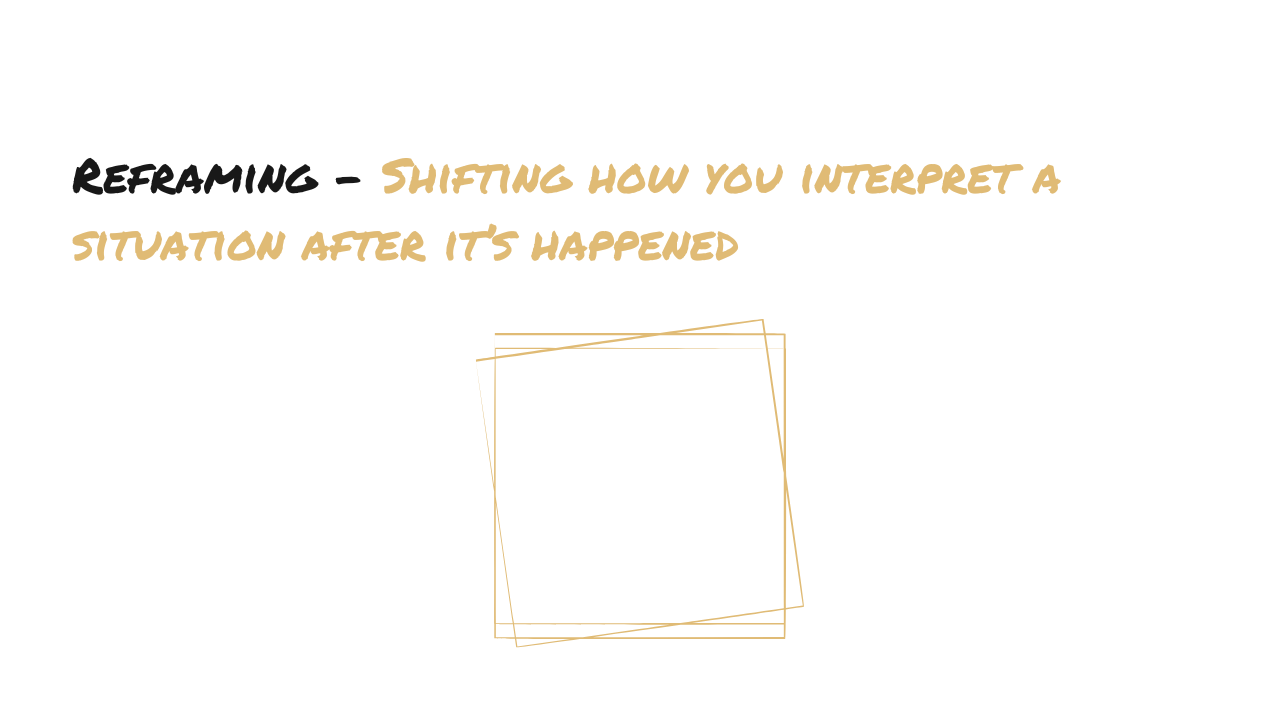Write your awesome label here.
What is Framing?
Framing is the mental lens you use to interpret an experience. Think of it as the filter between what happens and how you perceive it. Sometimes the frame is intentional, but more often, it operates unconsciously. By learning to consciously frame situations, you gain the power to shift your perspective—and your outcomes.
Let’s break down the three key types of framing: preframing, deframing, and reframing.
Preframing: Setting the Stage

Preframing is about setting expectations before an event happens. It shapes how someone perceives an experience by influencing their mindset going into it.
Example: Imagine you’re hosting a meeting to share a new idea. If you start by saying, “This idea could revolutionize how we work—it’s bold and innovative,” people will likely listen with curiosity and openness. On the other hand, if you say, “This might sound crazy, but bear with me,” you’ve already planted a seed of doubt.
The Power of Preframing:
- Influences perception: You direct attention toward specific aspects of the experience.
- Creates anticipation: By shaping expectations, you prime others to see things in a certain way.
- Drives focus: It helps guide the conversation or experience toward the outcome you want.
Preframing is used extensively in marketing, where brands set the tone for how their products are perceived. But it’s equally powerful in personal and professional conversations.
Deframing: Breaking the Frame

Deframing is the art of dismantling an existing frame. It’s what you use when someone is stuck in a perspective that’s limiting them or when an old way of thinking needs to be challenged.
Example: Say a colleague insists, “This project is impossible because we don’t have enough resources.” Deframing might involve responding, “What if we approach it differently? What if resources aren’t the real issue but how we’re using them?” By questioning the assumptions behind the statement, you break their current frame and open the door to new possibilities.
The Power of Deframing:
- Breaks limiting beliefs: It disrupts unhelpful thought patterns or narratives.
- Encourages fresh thinking: People are more likely to consider alternative perspectives when the original frame is dismantled.
- Builds curiosity: By removing old assumptions, you invite exploration and innovation.
Deframing is a critical skill in leadership and problem-solving, where challenging the status quo often leads to breakthroughs.
Enjoying the Read?
Weekly Mindset Newsletter
Get personal stories, decision-making strategies, and mental frameworks to help you stop overthinking, build self awareness, and live with more clarity.
Thank you!
Reframing: Shifting the Perspective

Reframing is the practice of taking an existing situation and viewing it from a new angle. It’s not about denying reality but about finding a different—and often more empowering—way to interpret it.
- Empowers action: A new frame often inspires creative solutions and renewed motivation.
Example: Imagine you’ve just received constructive criticism on a project. Instead of thinking, “I failed,” you might reframe it as, “This is an opportunity to improve and grow.” The facts haven’t changed, but your emotional response and next steps likely will.
The Power of Reframing:
- Transforms challenges into opportunities: It helps you see setbacks as stepping stones.
- Builds resilience: By shifting your perspective, you can maintain a positive outlook even in tough times.
- Empowers action: A new frame often inspires creative solutions and renewed motivation.
Reframing is a cornerstone of personal development, used by mindset coaches, therapists, and anyone looking to overcome obstacles.
What’s the Difference Between These Techniques?
While preframing, deframing, and reframing all involve perspective, they serve different purposes:
- Deframing challenges existing assumptions or beliefs.
- Reframing shifts how you interpret a situation after it’s happened.
- Preframing shapes perceptions before an event.
- Deframing challenges existing assumptions or beliefs.
- Reframing shifts how you interpret a situation after it’s happened.
Think of preframing as setting the stage, deframing as breaking the mold, and reframing as rewriting the story. Together, they give you a powerful toolkit for navigating life’s complexities.
Why Framing Matters
The way you frame your experiences influences how you feel, think, and act. It can mean the difference between feeling stuck or inspired, overwhelmed or in control. By mastering these techniques, you can:
3. Break free from limiting beliefs by questioning old assumptions.
1. Build stronger relationships by setting the right tone in conversations.
2. Overcome challenges by shifting your perspective.
3. Break free from limiting beliefs by questioning old assumptions.
Key Takeaway
Life is full of moments where the frame we choose shapes the story we tell ourselves (and others). The more aware you are of how you frame situations, the more empowered you become to shape your reality.
So ask yourself: How can you apply preframing, deframing, and reframing to shift your mindset? The answer might just unlock new possibilities that you have considered before.
Sincerely,
Sincerely,
Dexter Lam
Mental Models
Want to explore more mindset frameworks for optimizing your decision-making?

Do you want to level up and change your life Trajectory?
We're launching our course on Self-Awareness
Thank you!

